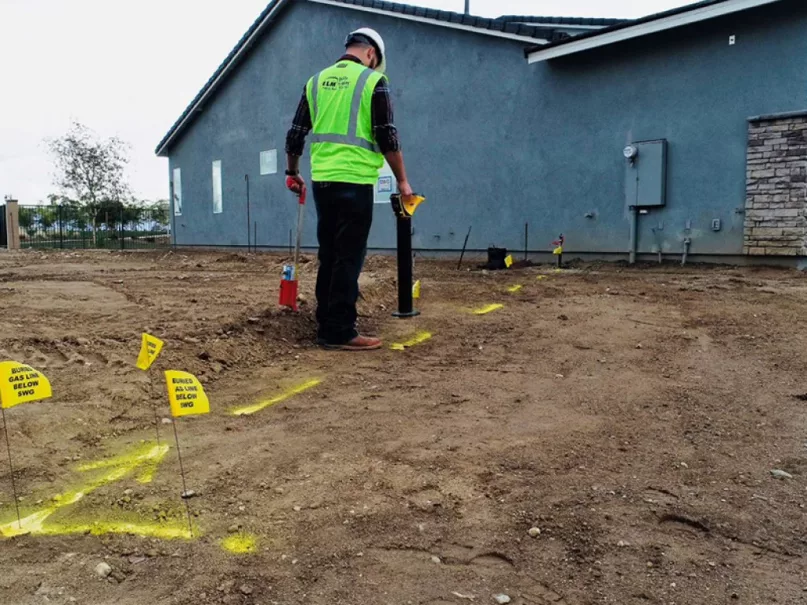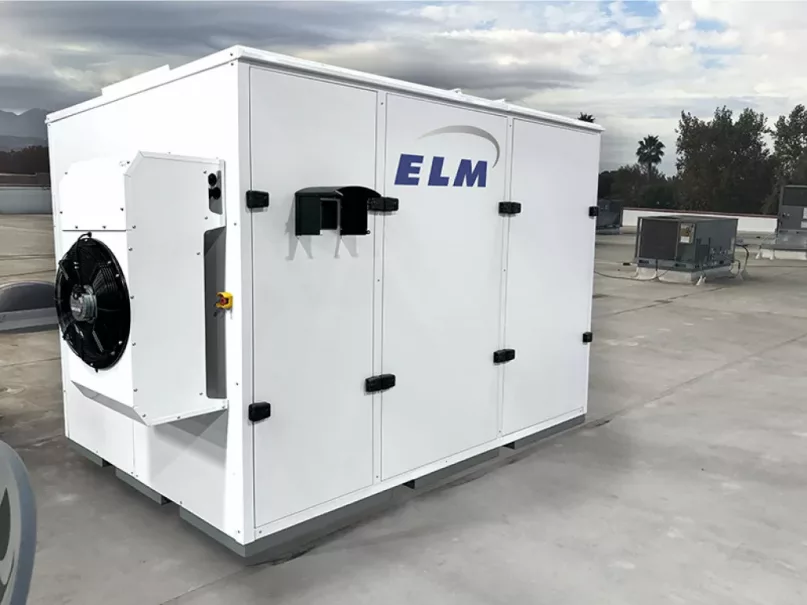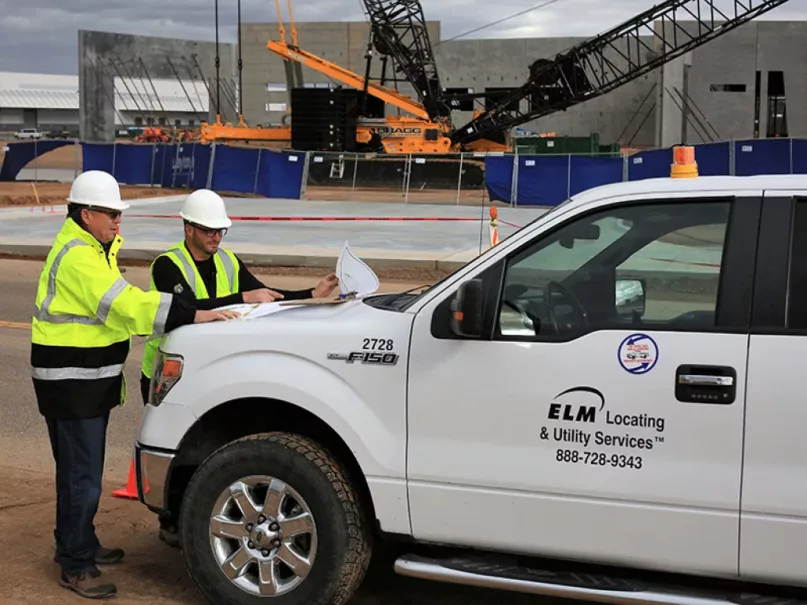With evolution at the fore, executives at ELM Companies discuss the company’s journey over the past two decades.
Evolution. Without it, a company would stagnate.
Its importance, particularly in 2021 on the back of a disruptive year for most firms, is key.
And despite COVID-19’s unwelcome introduction, Josh Hinrichs, President of ELM Companies, has seen tremendous growth in business over the past year. He has served in his current position since 2013 while seeing the organization emerge as a renowned player in the energy and utilities industry during that time.
“The business has certainly grown tremendously. In fact, it has more than tripled in size from when I started in 2001,” he explains.
“The utilities that we serve and work with have changed over the years and have become more demanding in the services and solutions they require. This has provided us with an opportunity to differentiate ourselves within the sector and heightened our ability to broaden product and service offerings while helping our clients achieve their goals.”
Although Hinrichs believes that the number of rivals in the utility services space over the past 20 years has diminished, the competition for business from those still active in the space remains fierce.
“In the utilities services industry, there’s been a lot of consolidation,” affirms Hinrichs. “When I first joined, we had lots of competitors operating in the same space in damage prevention and utility service work in general. That space has really shrunk in terms of the number of companies operating within it, but the level of competitiveness remains the same.”
ELM operates a number of flagship products, such as the LaunchPoint™ Logistics and Mobility software, FieldSight™ Control Systems, MicroGrid and Energy Storage Packages.
ELM FieldSight’s Microgrid site controller uses best-in-class hardware in combination with sophisticated backend architecture and communication interfaces to enable efficient monitor and control of microgrid assets through a single portal. Its efficient microgrid solutions allow customers to maximize their green energy consumption and resiliency needs.
Whereas, LaunchPoint’s CaaS IoT solution in the industrial, manufacturing and food industries utilizes the Dell IoT Edge Gateway powered by LaunchPoint Edge Software and the LaunchPoint Cloud to enable automated compliance, monitoring and reporting.
“We are best described as a technology company that provides compliance products and services across a wide spectrum,” explains Hinrichs.
“Within that technology spectrum, FieldSight is one vertical and LaunchPoint is another. Within LaunchPoint, it’s the logistics, mobile data collection and compliance monitoring side of the house, while with FieldSight it is microgrid and energy storage.”
Hinrichs believes that each of the company’s flagship products complement the other well.
“The reason they work so well is that the touchpoints are fantastic,” he explains. “There are common clients within the utility space, and both product lines penetrate many other markets in North America and worldwide.”
“Every utility provider needs compliance services. To provide them, you must have a good mobile platform to manage the workforce, workload and documentation of the work that we’re conducting. Being able to produce that documentation to regulatory agencies that require it is key to the utility clients we serve.”

Concerning Microgrid and Energy Storage products, ELM does a tremendous amount of work behind the meter but they are starting to see an increasing demand for integrated solutions into the utility infrastructure as they utilize greener energy products more and look to localize energy storage as a grid resiliency strategy.
“That’s where the overlap is nice because having that diverse product stream enables us to become less of a commodity-based service provider and more of a strategic service and product provider to the utility. We’re more of a one-stop shop than some of our competitors are.”
Since its launch in 2007, ELM FieldSight has evolved its systems and undergone a significant transformation during that time. According to Lee Graves, ELM Chairman and Founder, “In the beginning our focus was offering control to behind the meter microgrids that sit on the customer’s side of the utility meter.”
“It has changed tremendously under the leadership of our COO, Aron Bowman and his team,” Graves explains.
According to Bowman, “Our original offering was focused on back-up generator control and monitoring. At the time, the focus was primarily on helping the owners of back-up generators ensure they were complying with EPA Air Emissions Standards. There was a solution we offered that allowed those back-up generation systems to improve air emissions outputs and turn them from emergency back-up generation to demand response generation.
“In other words, if a utility was having a rolling brown-out and our clients needed to take themselves off the grid for a few hours at a time, the emissions coming out of their generators were good enough where that was possible. In terms of compliance, our clients had to prove to the EPA that their generator emissions were compliant during the entire run cycle, so we would monitor and capture that information and report back to the owner of the asset and EPA. That was where Compliance as a Service (CaaS) started for us.”
Now, ELM FieldSight operates in a far more advanced way and Bowman believes it has been quite a journey over the past 14 years.
“Today, we build a very robust microgrid controller capable of handling complete microgrid functionality,” he explains.
“This means we are capable of controlling the generator, the green energy supply and, of course, our energy storage packages that contain the batteries and other equipment necessary to provide a continuous and reliable power source. Our controller is also capable of interfacing with a utility or functioning completely independent of the grid by utilizing very sophisticated algorithms that allow the solution to be infinitely flexible and run indefinitely.”
With COVID-19 continuing to cause disruption the world over, ELM leveraged its LaunchPoint platform to develop a COVID system screening app that has proven useful to school systems, athletic training facilities and youth service organizations across North America.
“It’s been vital because it has essentially allowed them to remain open,” affirms Hinrichs.
“It has put the power of tracking COVID symptoms easily into the hands of the students, athletes, parents and teachers. The same model we use within our work management products were utilized here. We enable users to securely collect symptom data in a mobile setting and send it to the cloud. From there the school or organization can easily produce reports that demonstrate compliance with COVID protocols to the county Health Department, enabling them to remain open.”
To most companies, the importance of developing key, strategic supplier partnerships is essential to sustained success. For Hinrichs, it’s a statement he truly believes and admits his firm couldn’t operate without them.

“They’re extremely important,” says Hinrichs. “Looking at our service sector, we’ve got almost 1,000 vehicles across North America. We rely heavily on our partnership with John Robinson and his team at Shell Fleet Solutions to keep those vehicles moving every day.
“We are pleased to be supporting ELM through our Fleet Navigator Program. Our goal at Shell Fleet Solutions is to build long lasting partnerships, with companies like ELM, who see the value of working together to make us both better and stronger as a result! The relationship has strengthened over time and we are positioned very well to support their continued growth in the coming years,” says John Robinson, Midwest Region Manager for Shell Fleet Solutions.
“We also have a number of locating supply vendors that have been operating in a just-in-time environment during the past year, particularly in terms of shipping. We’ve been fortunate to have an excellent procurement department to stay on top of things and we are grateful to those suppliers who’ve partnered with us to keep things rolling during that time.”
In particular, Hinrichs points to his company’s relationship with Vivax-Metrotech as being influential and believes the relationship and understanding he has with the company’s President, Mark Drew, is unique and unlike anything he has experienced in the industry before.
“We rely heavily on Vivax for various pieces of equipment to support our service offerings. One of them is Vivax’s underground locator vLoc3-Pro series,” he explains. “The transparency that we have with them is fantastic. They have been accommodating in so many different ways. They listen to us and our requirements and the level of trust and rapport that we have is unique.”
“What is also important to us is the technological advancement, such as RTK GNSS integration, that is being integrated into their equipment, allowing us to develop tools for the increased focus of improving mapping of underground utilities across North America. Vivax Metrotech is critical to our ability to provide traditional locate services and enhance our ability to differentiate from the competition as we continue to develop specialized service offerings.”

Over the next 18 months, Hinrichs has outlined key priorities that his firm is targeting.
“We really have three targets in mind over the next couple of years,” he explains.
“We want to expand our microgrid and energy storage business. We know there is going to be a dramatic increase in demand for renewable energy sources and along with that, there will be a need for microgrid controllers and energy storage systems. We strongly believe the packages that we provide in the commercial, industrial, utility and residential spaces are among the best available. We are currently building another manufacturing facility near Dallas, TX to dramatically increase production capacity and meet increasing demand.”
“We also want to focus on growing our software sales within LaunchPoint. Work management and logistics becomes more important each year and our specialized apps make mobile interface and data collection more affordable and efficient. Our goal is to expand product utilization in the construction industry and continue crossover into other service provider markets as well. If a company has mobile workers who complete service orders, we have a solution to support them.
“And finally, in the utility service space, we are going to continue expansion of our diversified offerings. Our bread and butter is locating and damage prevention services but we intend to continue expanding our market share of other compliance services, with a specific focus on gas leak survey and sophisticated mapping services. We have some very large clients out there and they have a variety of compliance services needs. We intend to continue leveraging our in-house technology to offer a wider and more strategic range of services to these companies.”









